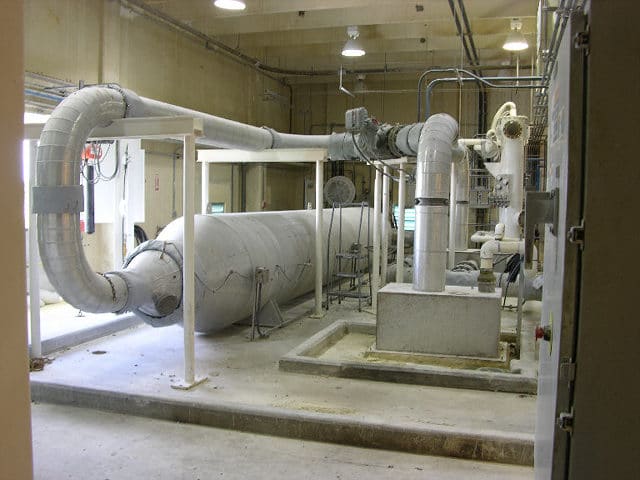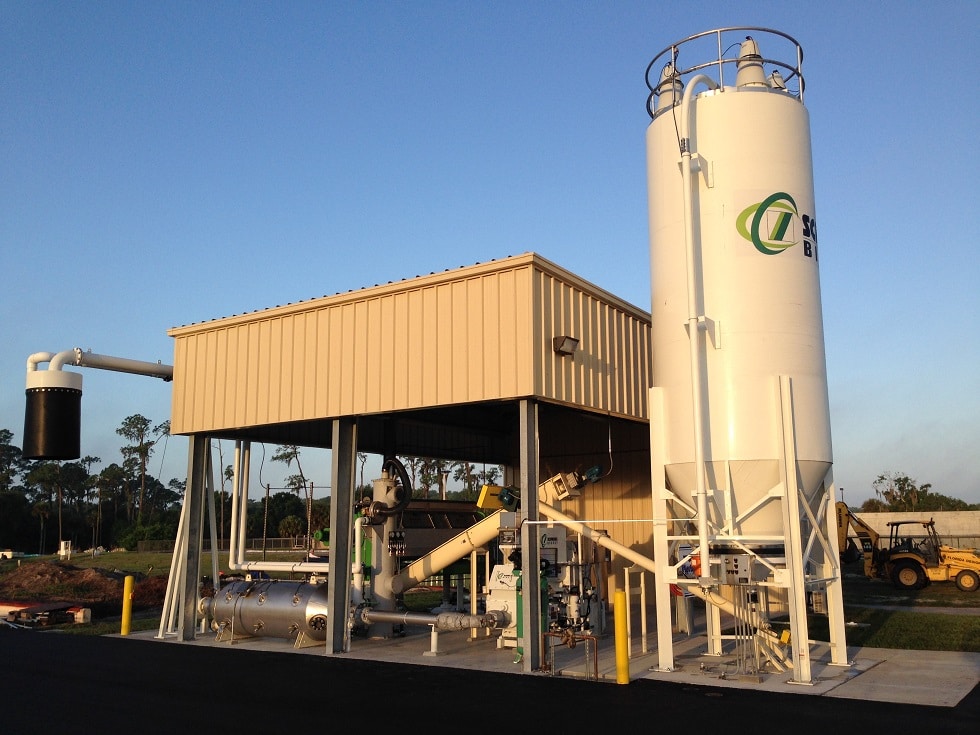Bioset Process
The industry leader in biosolids and sludge processing solutions
The Bioset Process has over twenty-five years of proven operating history in both warm and cold climates. The heart of the Bioset process is Schwing Bioset’s piston pump technology that has been proven in wastewater applications for over thirty years. The end product is mixed homogenously and suitable for the long-term storage requirements common in cold-weather climates.
The Bioset process blends biosolids with quicklime and sulfamic acid to meet both the temperature and pH requirements of the USEPA’s 503 regulations to produce Class A biosolids. The continuous process controls reactor retention time by the flow rate through the process, while process temperature is controlled by monitoring temperature probes and adjusting chemical addition. The enclosed process controls dust and odors and produces an end product that is highly suitable for land application or even landfill cover.
BIOSET PROCESS
2. Easy to maintain – Very few moving parts. The primary serviceable item is the piston pump, which was originally designed for pumping concrete at pressures up to 1,500 psi. Typical Bioset systems operate at less than 100 psi so service intervals in excess of 5,000 hours are not uncommon.
3. Consistent mixing = consistent results – Alkaline systems that rely on pugmills to blend the lime typically produce a balling effect in the sludge that results in inconsistent mixing and untreated material. The Bioset process mixes the biosolids and chemicals in a twin-shaft mixer and then pumps the solids under pressure through the reactor. The resulting exposure to pressure allows thorough and complete mixing of biosolids and chemicals.
4. Continuous Operation – The Bioset Process is a continuous process, not a batch, with the reactor sized for the specified capacities.
5. Clean / General housekeeping is minimal – Chemical feed areas are enclosed preventing dust and odors from escaping. Once inside the pump and reactor, the odors are contained until the solids are discharged at the end of the reactor. This simplifies scrubbing as there is only a single point source of odors to capture and scrub.
6. Process to Further Reduce Pathogens (PFRP) approvals to reduce operating temps – The ammonia released inside the reactor remains in contact with the biosolids and acts as an additional stressor to inactivate pathogens. The Pathogen Equivalency Committee (PEC) of the USEPA has recognized this and has issued National approval for the Bioset Process to operate at 55C, a reduction from the 70C specified by the time/temperature reaction. This reduction in operating temperature serves to further reduce the already low operating costs by over 20%.
7. Long term product stability – Other alkaline systems that add “just enough” lime to achieve Class A pH levels can experience drops in their pH in the storage areas as the CO2 in the atmosphere reacts with the hydrated lime. This drop in pH results in the biosolids reverting back to sub-Class A levels. Class A material produced by the Bioset process maintains Class A pH levels for more than six months.
8. Flexible design layout – Systems can be easily installed as a retrofit into existing buildings.

SBI SOLUTIONS
Dewatering, Pumping, Treatment: The Complete Class A or B Solution
DW/RP Solution
SBI Solutions provides a complete, cost effective Class A or B Solution as a compact, modular system with minimal set up requirements. The proven reliability of a piston pump combined with the patented Bioset process is integrated with efficient screw press dewatering capability to make this a one-stop solution to your biosolids handling needs.
RP Solution
If your plant already has a dewatering system, the base RP Solution model (piston pump and Bioset process) will turn your dewatered cake into Class A or B Biosolids.
Compact – Modular – Minimal Setup
• Plug-and-play skidded modules allow for easy retrofits into existing buildings
• Completely enclosed to eliminate fugitive emissions
• Cost effective with low cost of ownershipTruck Hauling.jpg
• Long term Class A or B product stability
• Extremely easy to operate with a small footprint
End Product Solutions
Customized end product solutions for wastewater treatment plants include:
• Turnkey equipment packages
• Operations
• Product Hauling
• End-use marketing
• Financing
For technical data such as dimensions, power supply, water supply, sludge feed type, and more, please download the brochure.
Project Gallery














Additional Resources

Bioset Process Brochure
Read More

SBI Solutions Brochure
Read More

Application Report #1
Read More

Application Report #3
Read More

Application Report #8
Read More

Application Report #12
Read More

Application Report #17
Read More

Application Report #20
Read More

Application Report #23
Read More

Application Report #24
Read More

Application Report #25
Read More

Application Report #26
Read More
